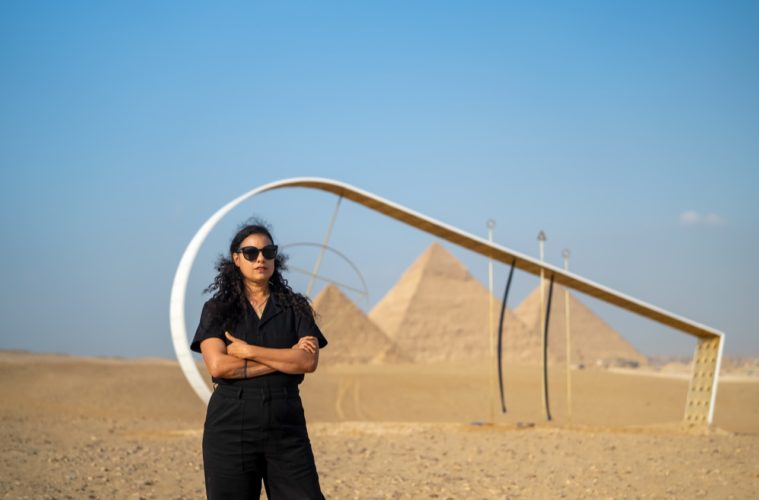 Working in painting, sculpture, installation and architectural engagement, artist Sherin Guirguis practices a hybrid form of object and image construction that draws equally on personal, emotional gestures and thoughtfully sourced motifs from the outside world. Navigating individual, family, and cultural memory through abstract language and specific narratives, for Guirguis the act of embodying the schemes and energies of the past in evocative visual forms anchors history more indelibly within the present. From MetroLink to the Whitewater Nature Preserve — and now, the Great Pyramids — her site-specific works always reflect an exploration of the locale’s history. In the case of Egypt, where she was born, this is also her own story. But in her signature manner, Guirguis made the project about honoring those women who have lived and still remain there.
Working in painting, sculpture, installation and architectural engagement, artist Sherin Guirguis practices a hybrid form of object and image construction that draws equally on personal, emotional gestures and thoughtfully sourced motifs from the outside world. Navigating individual, family, and cultural memory through abstract language and specific narratives, for Guirguis the act of embodying the schemes and energies of the past in evocative visual forms anchors history more indelibly within the present. From MetroLink to the Whitewater Nature Preserve — and now, the Great Pyramids — her site-specific works always reflect an exploration of the locale’s history. In the case of Egypt, where she was born, this is also her own story. But in her signature manner, Guirguis made the project about honoring those women who have lived and still remain there.
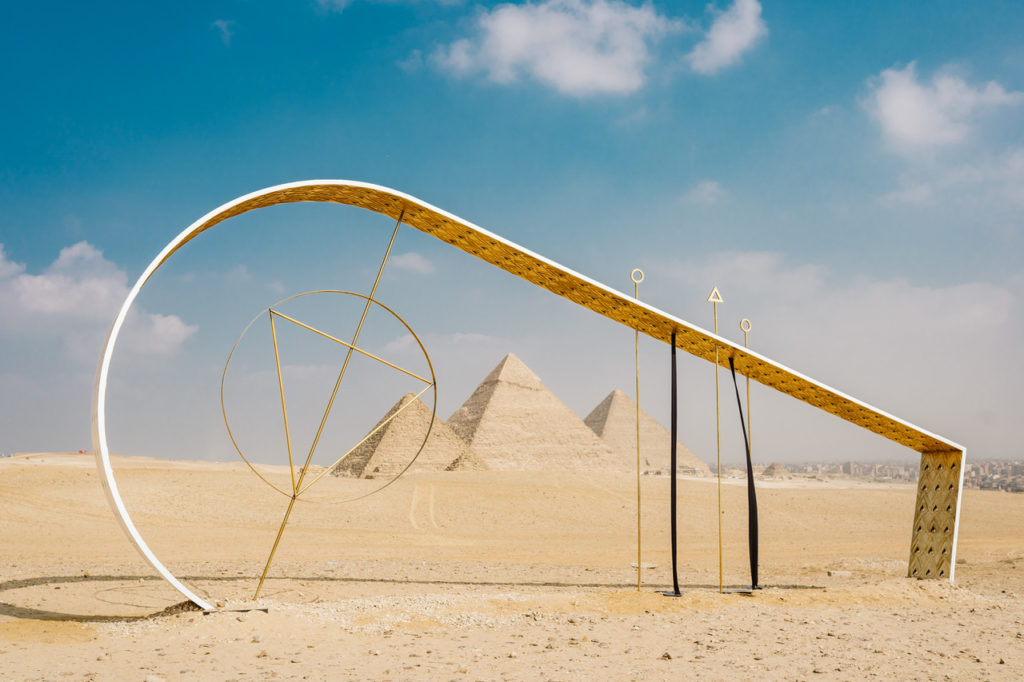
Sherin Guirguis: Here I Have Returned, 2021. Wood, copper, cymbals, wool and jasmine essence. A site specific sculpture at the Pyramids Plateau, Giza, part of the Forever is Now exhibition by Art D’Egypte. (Courtesy of Sherin Guirguis Studio. Photo by: Hesham El Saifi)
L.A. WEEKLY: What is your short answer to people who ask what your work is about?
SHERIN GUIRGUIS: My work is about difference and the complexity present in the politics of place. I use site, text and recovered histories as the core of each series and develop projects that engage audiences in a dialogue about power, agency, and social transformation. Although I make paintings and sculptures, my practice is in fact research-based and focuses on heightening the understanding of marginalized and contested histories, in particular those of women. I aim to make the often-invisible work of historically underrecognized women visible once more through the visual language of craft and ornament, fields that themselves are dismissed by the contemporary artworld.
What would you be doing if you weren’t an artist?
I don’t know that I could answer that question, in that being an artist is part of who I am, even before I knew what that was (see next answer). However, during the quarantine we moved out to the north coast for a while, and I have to say the seclusion and wildness of the Pacific captured me in a way I hadn’t predicted. I suppose it fed into my inner loner. Perhaps in another life I could be living a more solitary life, still making art of course, but perhaps more writing, more walking, more wandering.
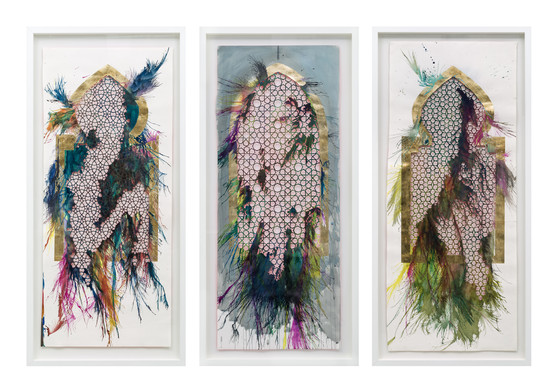
Sherin Guirguis: Untitled (Shubbak VI), 2013. Collage and Mixed media on hand-cut paper, 72 × 30 in (Collection of LACMA)
Did you go to art school? Why/Why not?
I was not the kid that could draw or make cool things in school. In fact, I went to a very academic school, and we hardly had any art classes, so I came to art making much later in life than most. I was attending UCSB studying geology, however, by my junior year I realized that even though I loved the earth sciences as a study, there wasn’t a job or career that interested me in the field. I took some art classes to fill in my schedule while I thought about what to do and was completely consumed by making art. I was introduced to conceptual art, feminist art, installation art and activism in art. I was hooked! I spent all my time making work and built a portfolio so I could transfer to the College of Creative Studies at the University and study art there. I’ve never looked back since.
When is/was your current/most recent/next show or project?
My current project is a site-specific sculpture Here I Have Returned. Titled after a poem by the great Egyptian feminist and poet Doria Shafik, it is my contribution to the Forever is Now exhibition curated by Art D’Egypte at the Giza Pyramids Plateau. Here I Have Returned is an homage to the labor of Egyptian women who have lifted and supported Egyptian society and culture over time. The sculpture’s form is inspired by that of an ancient sistrum, a sacred musical instrument used by the priestesses of Hathor during rituals and processions. Engraved with pharaonic inspired patterns and excerpts from a poem by Shafik, the piece rises from the sand, calling upon us to recall the power and labor of these women.
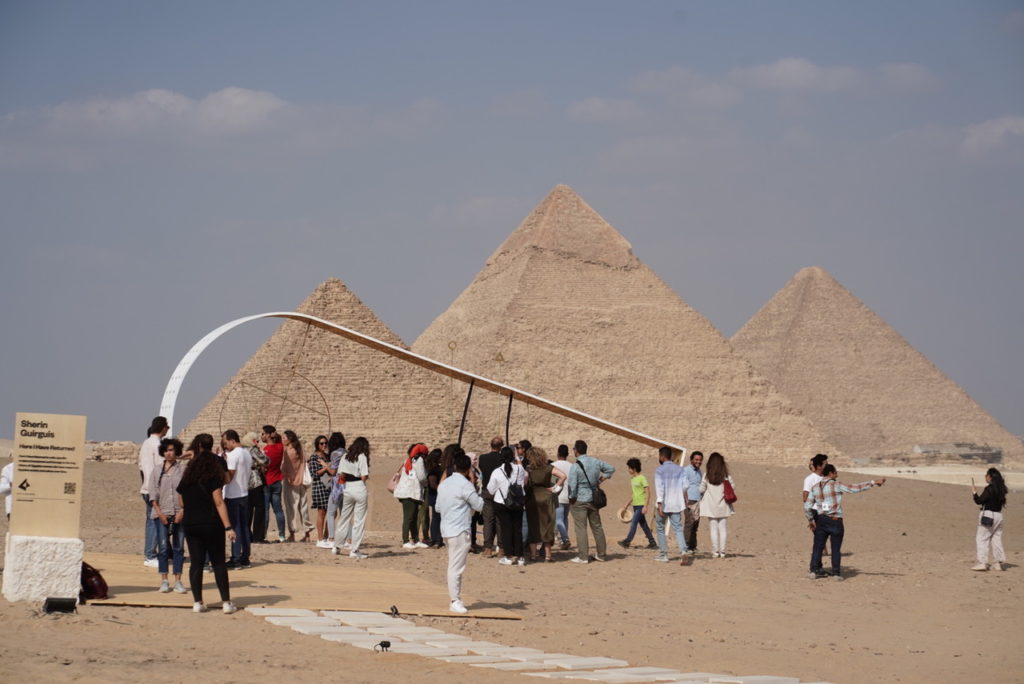
Sherin Guirguis: Here I Have Returned, 2021. Wood, copper, cymbals, wool and jasmine essence. A site specific sculpture at the Pyramids Plateau, Giza, part of the Forever is Now exhibition by Art D’Egypte. (Courtesy of Sherin Guirguis Studio. Photo by: Hesham El Saifi)
Visitors are invited to activate the cymbals on the sculpture creating a sense of call and response from the present to the past and back. The sculpture is embedded with the scent of jasmine oil sourced from local Egyptian farms, celebrating the work of the women who harvest the delicate flowers in the night. The sculpture is both shelter and monument — a site of interaction with the Pyramids, the community, and the visitors from all over the world. The sound and fragrance act as an ethereal echo of rituals performed here many centuries ago. The work was produced by L.A.-based art nonprofit bardo LA; their Director Elizabeta Betinski was with me on the ground in Egypt through day and night to make it happen.
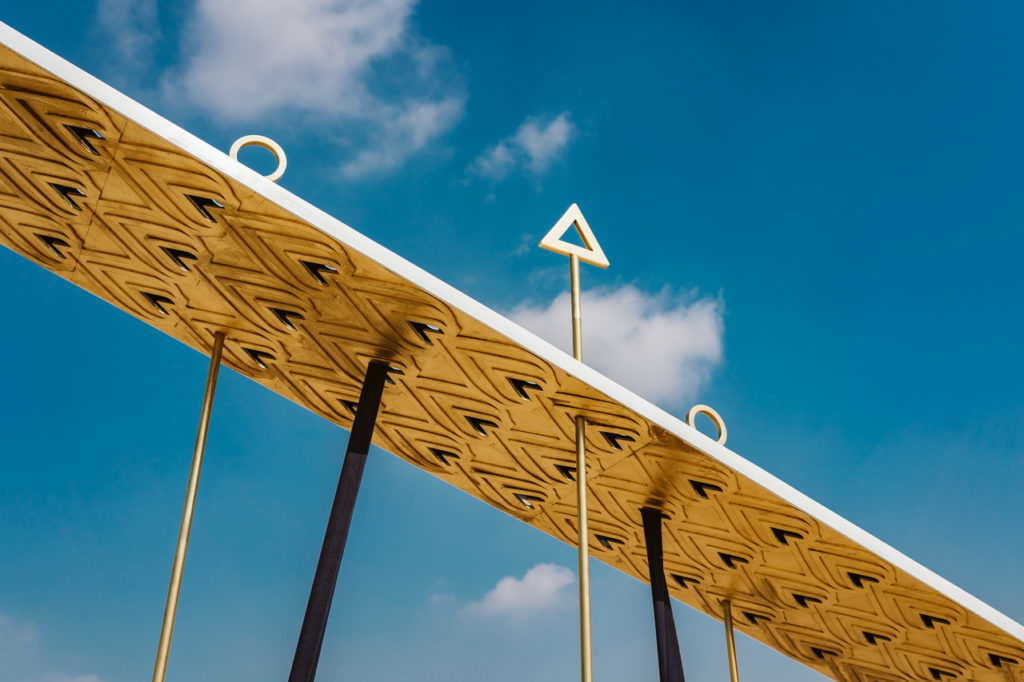
Sherin Guirguis: Here I Have Returned, 2021. Wood, copper, cymbals, wool and jasmine essence. A site specific sculpture at the Pyramids Plateau, Giza, part of the Forever is Now exhibition by Art D’Egypte. (Courtesy of Sherin Guirguis Studio. Photo by: Hesham El Saifi)
As a parallel project I invited friend and artist Amitis Motevalli to perform her own work in conversation with mine which was positioned to highlight the Queen’s Pyramids. Amitis performed The Last Stone – Sangeh Tamam — an endurance performance in response to Here I Have Returned. Starting at the Queens’ Pyramids as an ablution, a recognition of the unrecognized and a gestural act of iconoclasm, she used stones, trash and dung, found on the plateau to create a path from the Queens’ tombs to my sculptural installation connecting the past to the present. The stones were also used as tasbeeh (prayer beads) to chant and remember all those who lost their lives. Each stone she placed, she chanted out loud a characteristic name of God in the tradition of a Sufi zikr. With each stone, she placed an intention to remember all the women and girls who have contributed to the monument and history of Egypt — the women in the neighborhood who maintain the space, the women and girls who peddle items, clean, archive, write, tell stories; all those creating harmony and hosting people from all over the world.
Website and social media handles:
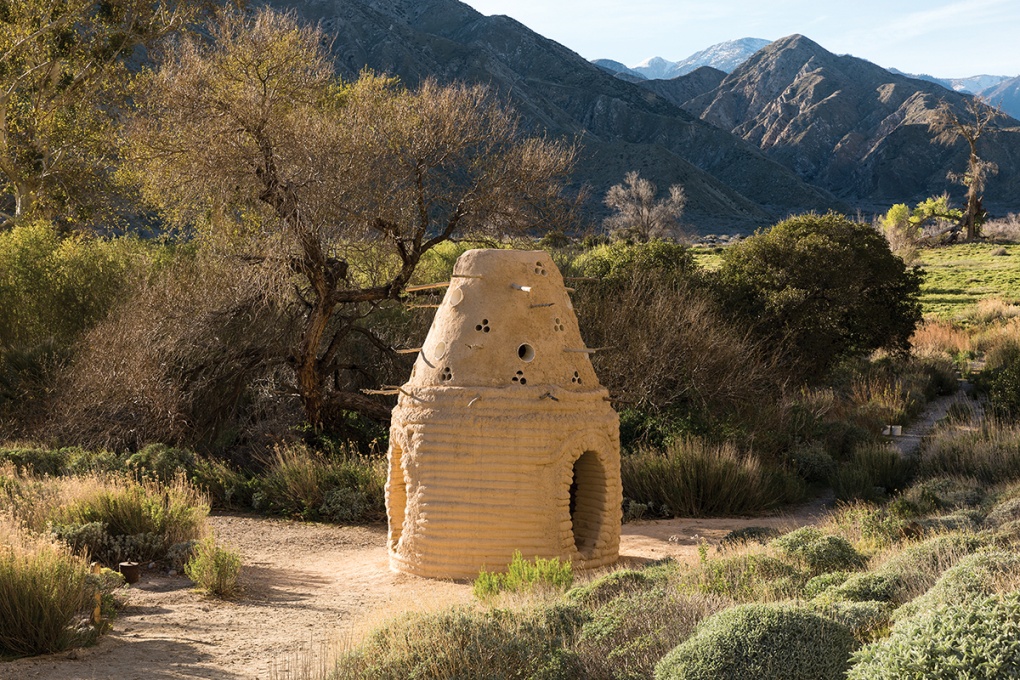
Sherin Guirguis: One I Call, adobe, at Desert X 2017
Advertising disclosure: We may receive compensation for some of the links in our stories. Thank you for supporting LA Weekly and our advertisers.

